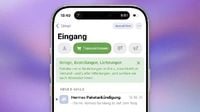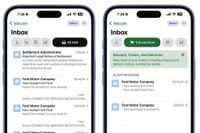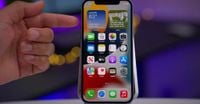In a bid to enhance user experience and customization, Apple has introduced significant updates in its latest iOS 18.4, iPadOS 18.4, and macOS 15.4 Sequoia. These updates bring new features aimed at improving the functionality of default applications and email management, catering to user preferences across the globe.
One of the most notable changes in iOS 18.4 is the introduction of two new categories for setting default apps: Translation and Navigation. This feature allows users to customize their app experience significantly. The Translation category is available in the U.S. and abroad, enabling users to switch their default translation app from Apple’s own Translate to alternatives like Google Translate. This flexibility is particularly beneficial for users who may prefer third-party applications for translation tasks.
However, the Navigation category is currently limited to users in the European Union, where they can change their default navigation app from Apple Maps to other options such as Google Maps or Waze. This restriction has drawn some disappointment from users outside the EU, who are eager for similar customization options. Users can access these settings by navigating to Settings > Apps > Default Apps, where they will find a list of categories to choose from.
In the U.S., users have nine category options for default apps, with Navigation being the tenth category available exclusively in the EU. The categories include Messaging, Calling, Call Filtering, Browser App, Translation, Passwords & Codes, Contactless App, and Keyboards. This enhancement marks a significant step in Apple's ongoing efforts to make the iPhone experience more personalized and user-friendly.
In addition to the changes in default app settings, Apple has also revamped its email client with the latest updates. The redesigned Apple Mail now automatically sorts emails into four distinct categories: Important, Transactions, News, and Advertising. This new sorting system is designed to help users manage their inboxes more efficiently. However, some users have reported that this feature can lead to confusion, as emails may seem to disappear from their primary inbox.
The categorization system aims to streamline email management by categorizing messages based on their content. Important emails are prioritized, while Transactions include order confirmations and shipping notifications. News comprises newsletters and updates, and Advertising contains promotional offers from various merchants. However, Apple has clarified that these categories do not serve as a spam filter, meaning that spam and phishing emails can still end up in the inbox, often marked as Important.
Initially, this categorization feature was only available for English-language emails when iOS 18.2 was released. Users operating in other languages were unable to access this functionality until the recent iOS 18.4 update. Now, the categorization feature is available globally, allowing users of different linguistic backgrounds to benefit from this organizational tool.
For those who prefer the traditional email layout, Apple Mail offers the option to switch back to the classic list view. Users can also access a hidden "All emails" category by swiping from right to left across the category bar, allowing them to see all their emails regardless of the new sorting system. This option is crucial for users who may find themselves frustrated with missing emails due to the automatic sorting.
Despite the enhancements, some users have expressed concerns about the effectiveness of the sorting algorithm. The categorization process appears to be locally managed on devices, and while users can manually re-sort incorrectly categorized emails based on sender address, the system may not always accurately predict where emails should be categorized. This has led to some dissatisfaction among users who expect a more intelligent sorting mechanism.
As Apple continues to innovate and improve its software offerings, these updates reflect the company's commitment to enhancing user experience. The introduction of more customizable features, especially in terms of default apps and email management, aligns with the growing demand for personalization in technology.
In addition to these software updates, Apple is also promoting various accessories for the iPhone. Among the highlighted products are the AirPods Pro 2, now available for $199 (down from $249), a 10-year AirTag battery case 2-pack, an Anker 100W charging brick for fast charging, a MagSafe Car Mount for iPhone, and a HomeKit smart plug 4-pack. These accessories aim to complement the new software features and enhance the overall iPhone experience.
As users adapt to these changes, it remains to be seen how effectively they will integrate these new features into their daily routines. While the updates promise greater flexibility and organization, user feedback will be crucial in determining the success of these enhancements. Apple’s ongoing commitment to user-centric design will likely continue to shape future updates and features, ensuring that the iPhone remains at the forefront of mobile technology.






